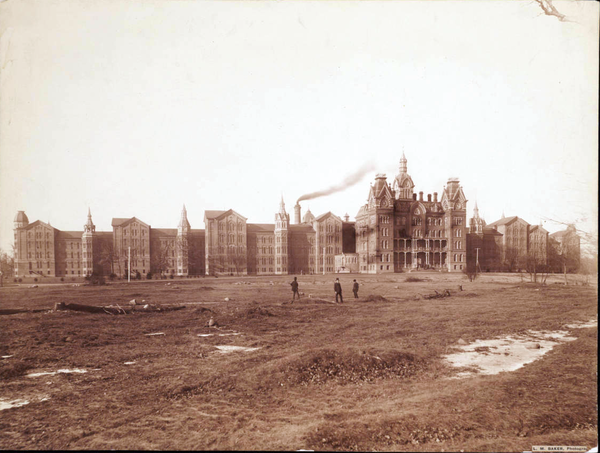Difference between revisions of "Portal:Featured Image Of The Week"
From Asylum Projects
M-Explorer (talk | contribs) |
M-Explorer (talk | contribs) |
||
| (416 intermediate revisions by 2 users not shown) | |||
| Line 1: | Line 1: | ||
{{FIformat | {{FIformat | ||
| − | |Image= | + | |Image= OHcolumbus20.png |
| − | |Width= | + | |Width= 600px |
| − | |Body= | + | |Body= [[Columbus State Hospital|This tract fronted south on what is now East Broad street]], and the western boundary was near what is now Washington avenue. During the next three years they erected a building on these grounds, at a cost of about sixty-one thousand ($61,000) dollars. The institution accommodated one hundred and twenty patients, and was the first institution for the treatment of the insane organized west of the Alleghenies. On May 21, 1838, William M. Awl, M. D., of Columbus, was elected Medical Superintendent by the Trustees, and the first patient was received on November 30 of that year. |
}} | }} | ||
Revision as of 04:28, 29 March 2020
Featured Image Of The Week
This tract fronted south on what is now East Broad street, and the western boundary was near what is now Washington avenue. During the next three years they erected a building on these grounds, at a cost of about sixty-one thousand ($61,000) dollars. The institution accommodated one hundred and twenty patients, and was the first institution for the treatment of the insane organized west of the Alleghenies. On May 21, 1838, William M. Awl, M. D., of Columbus, was elected Medical Superintendent by the Trustees, and the first patient was received on November 30 of that year.
